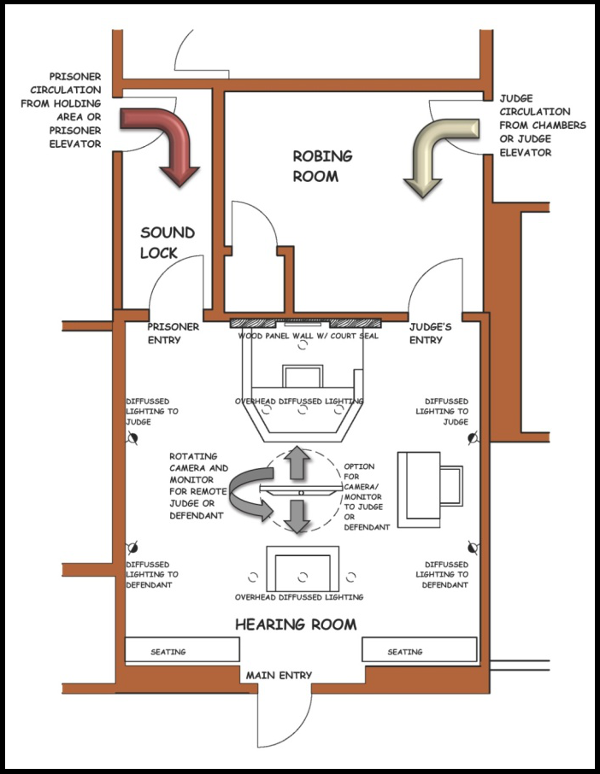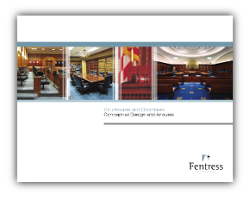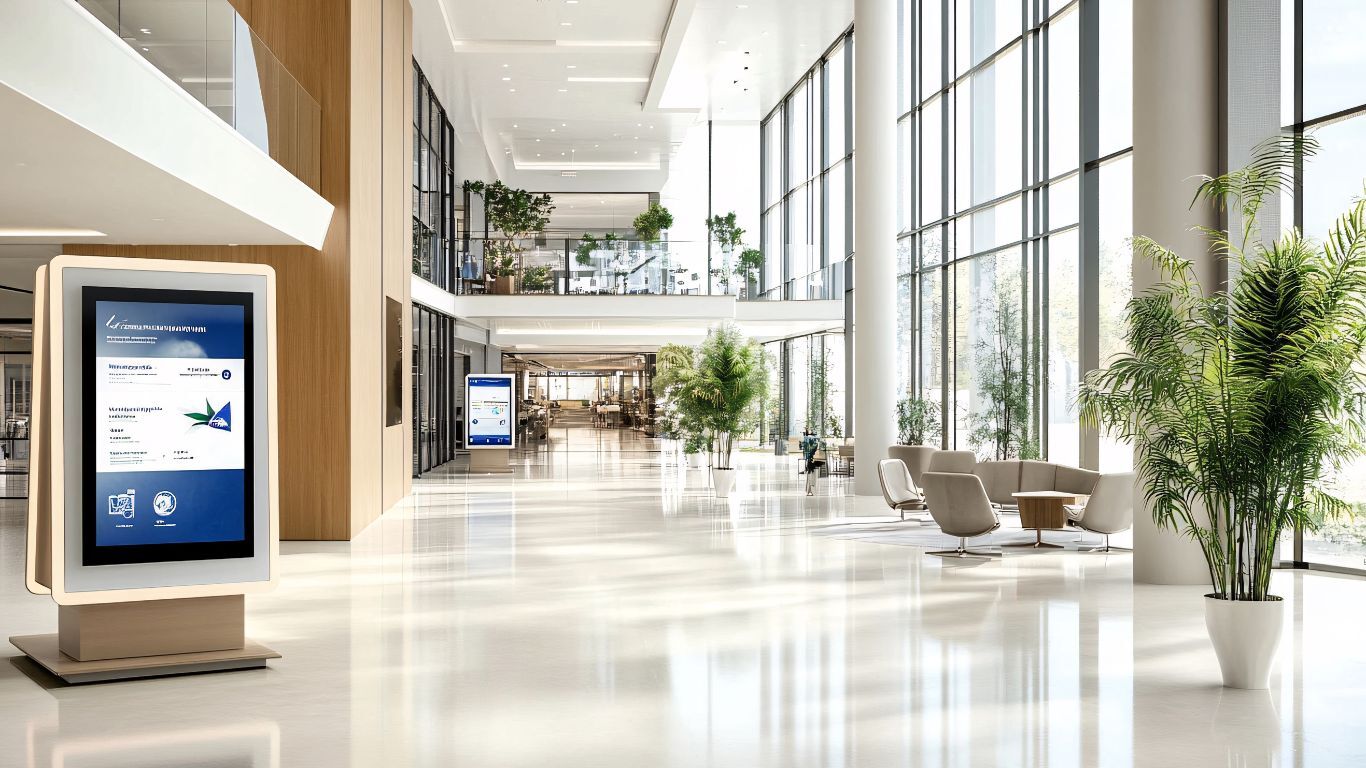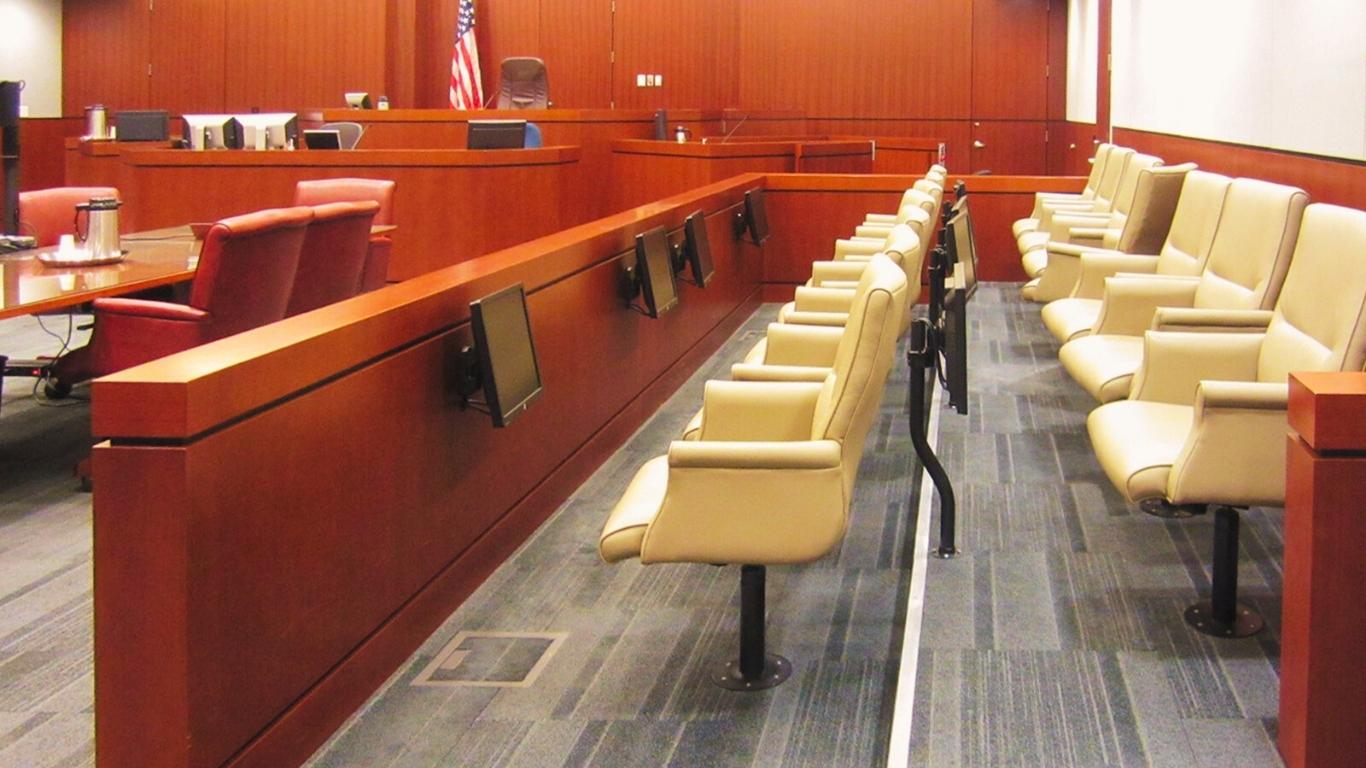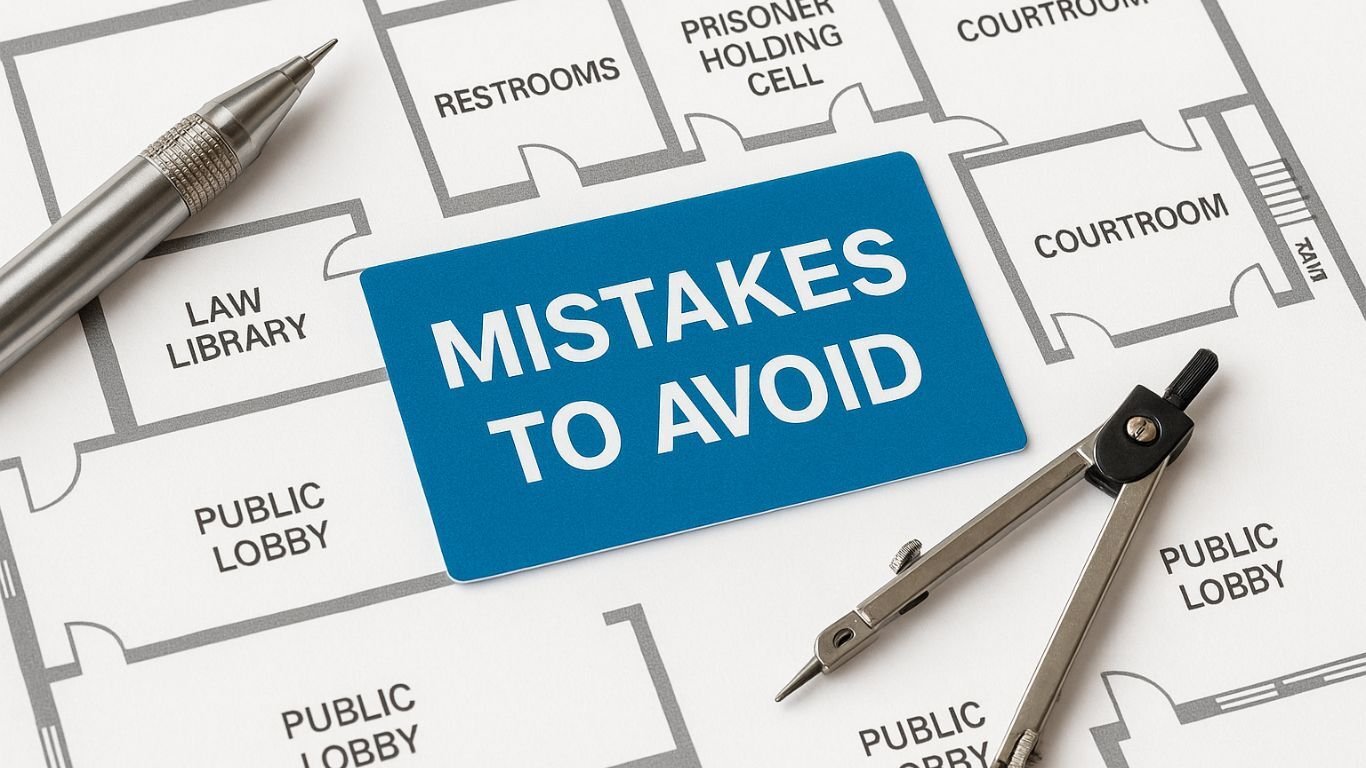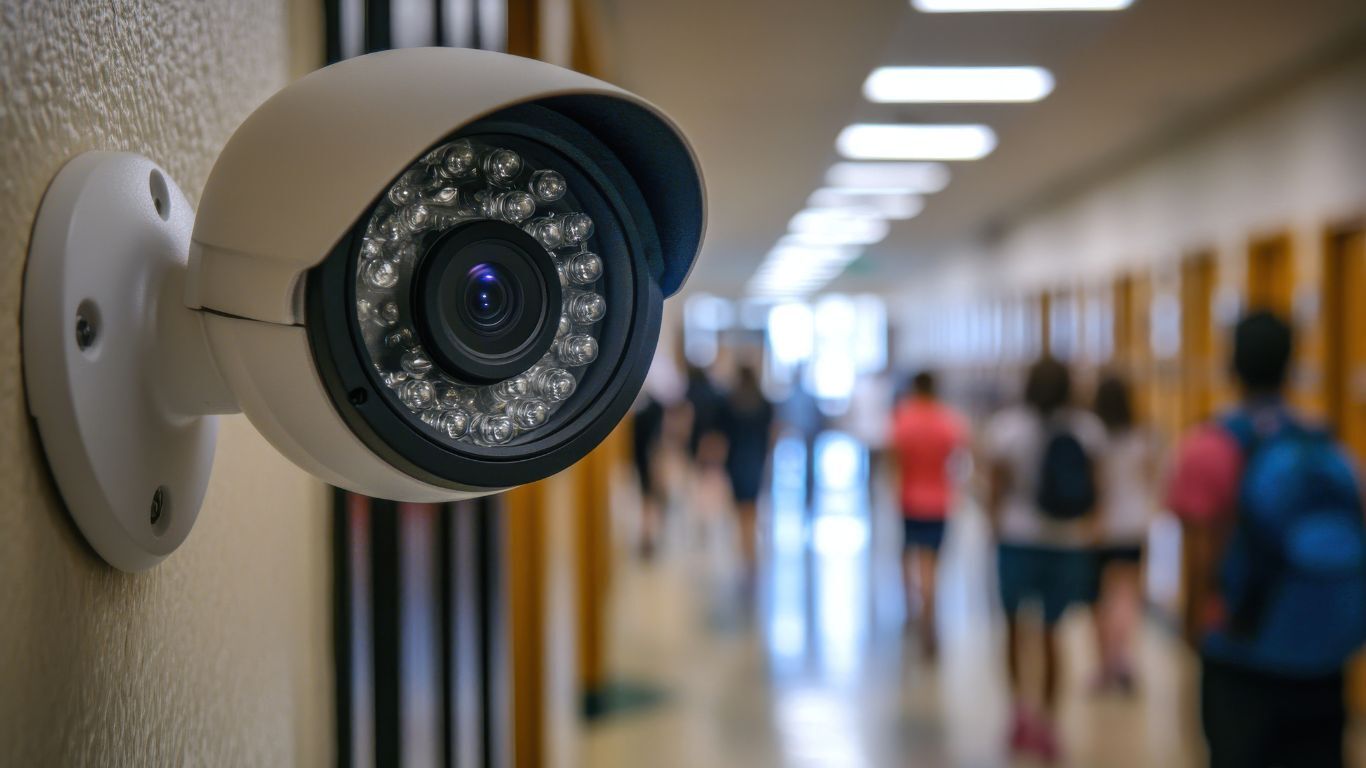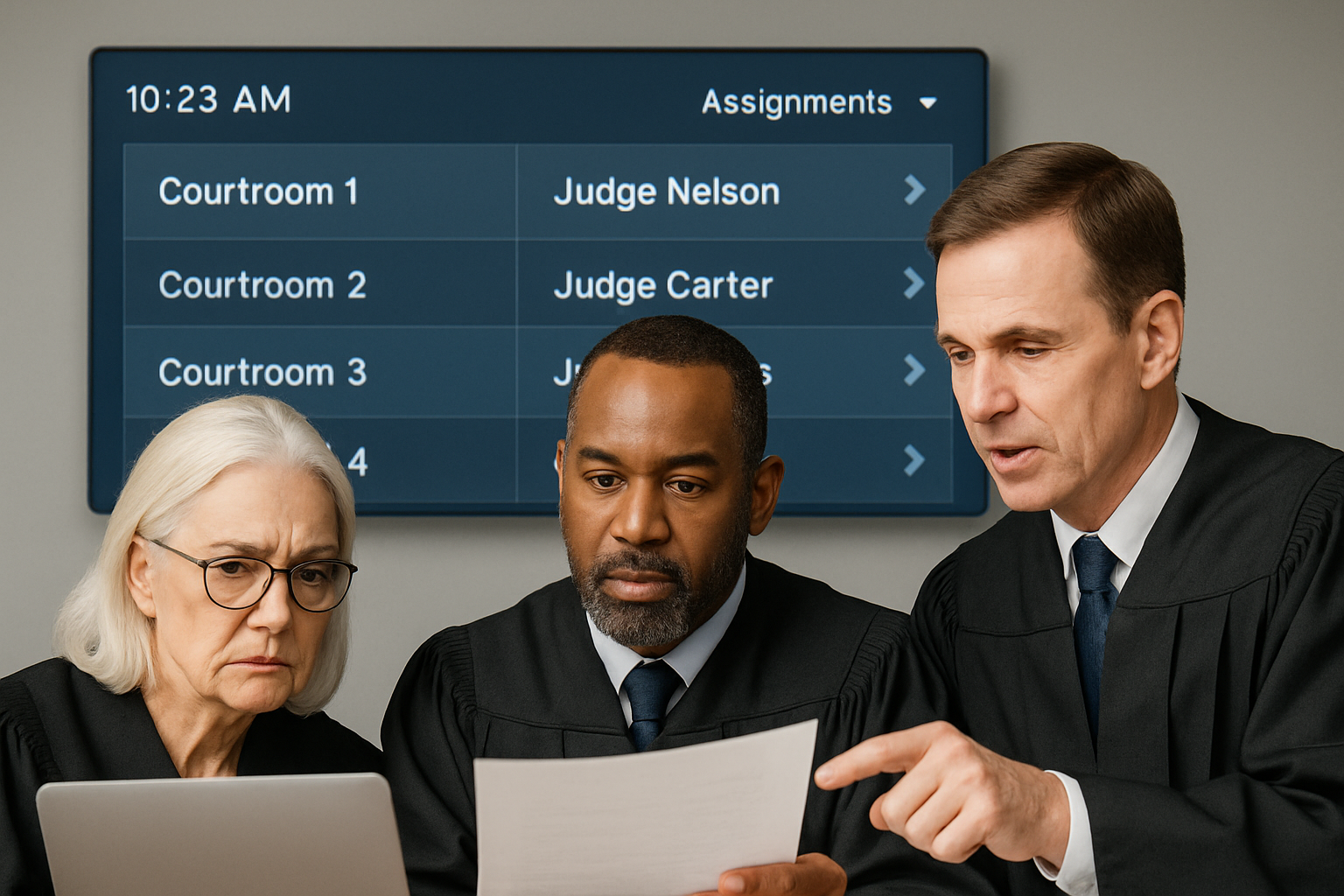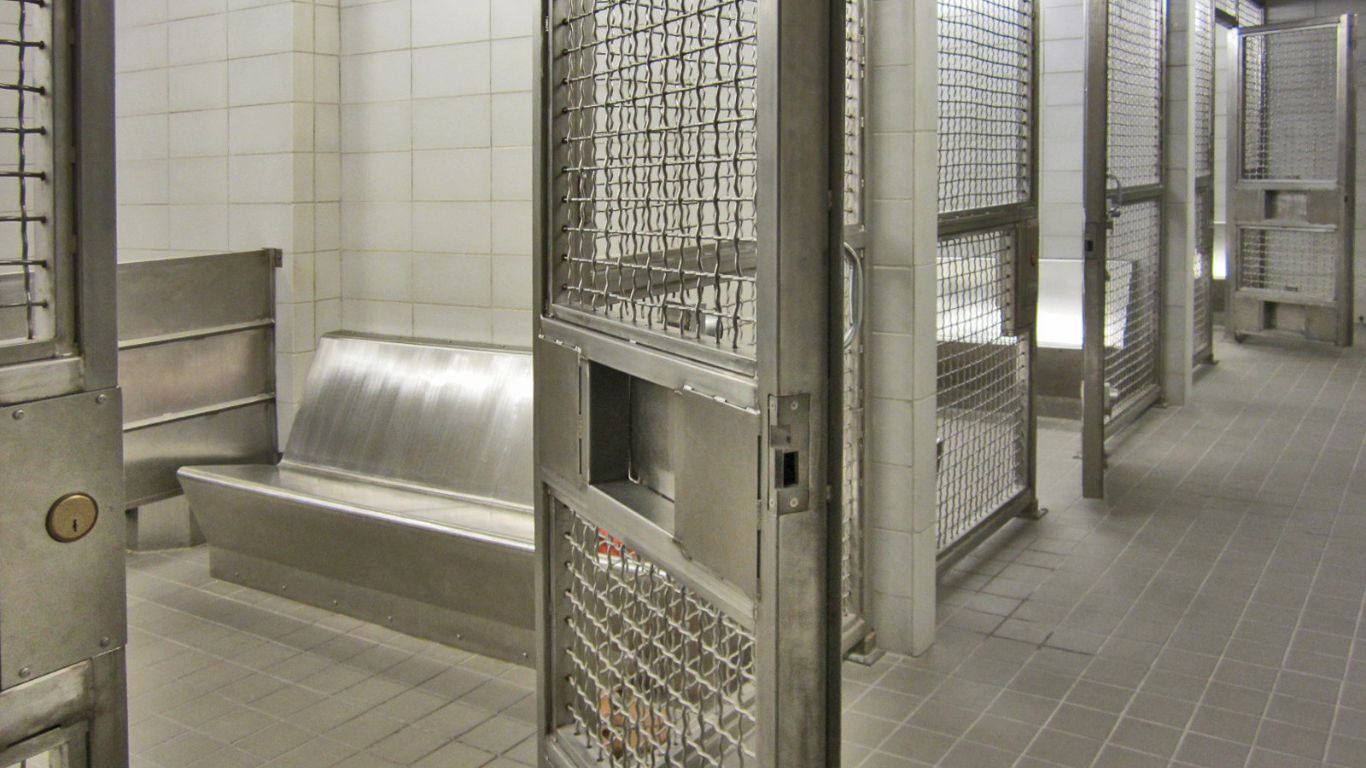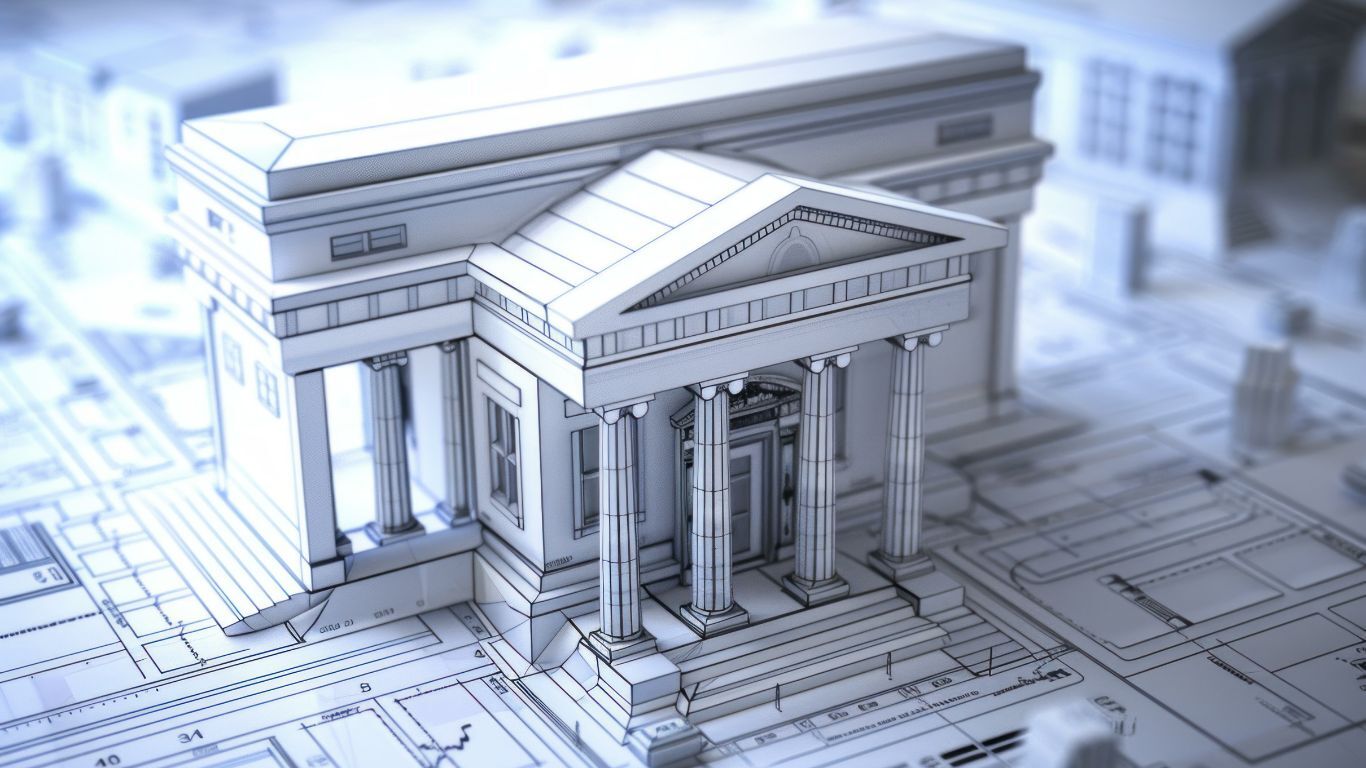In my last article, I discussed the advantages of video-conference hearing rooms. Today, I will present an overview of the basic components that should be included in an ideal video-conference hearing room.
To better put this discussion in context, I should note that the mix of hearing room components that are depicted in the following example layout and the summary list is intended to support a hearing room that can be flexible in its use for any of these three scenarios:
- The physical presence of both the judge and the defendant
- The physical presence of only the defendant with the judge located in a separate facility
- The physical presence of only the judge with the defendant located in a separate facility
Video-conference Room Layout
The following graphic depicts one possible layout for this type of multi-purpose hearing room.
Flexible-use, Video-conference Hearing Room
The furniture and technology components and room characteristics depicted in this example hearing room layout include:
- A judge’s bench raised one step above the hearing room floor
- A podium in the center of the room for the defendant and counsel
- A court reporter’s desk at the side of the hearing room
- Seating at the rear of the room for spectators and law enforcement personnel
- Diffused lighting from above to light both the judge’s bench and the podium
- A camera and monitor system located between the bench and the podium that can rotate based on who is being presented via video
- Flush-mounted floor boxes containing audio, power, data, and phone at the camera/monitor and podium locations
- Under-counter audio, power, data, and phone at the judge’s bench
- Under-counter power, data, and phone at the court reporter’s bench
- An A/V rack in an adjacent closet or under the judge’s bench
- A ceiling height of approximately 10’
- A size allocation of approximately 400 square feet for the hearing room
Although this example hearing room offers the optimal level of flexibility of use, an individual court might select a different hearing room configuration specifically tailored to its own intended use of the facility. The guiding principle should include flexibility in applying technology and space configuration in all cases.
Get our Courtrooms and Chambers: Conceptual Design and Analysis ebook NOW! <<<




